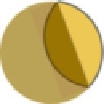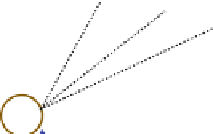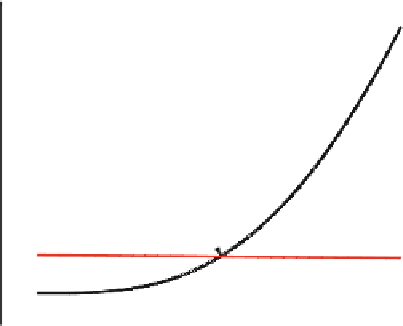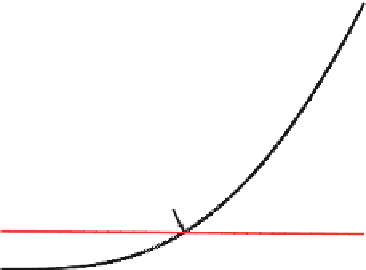Geoscience Reference
In-Depth Information
Fig. 9.9
The point of CMI
inside Jupiter and its satellites
m
1
m
2
m
3
r
3
r
2
r
1
m
o
r
o
A
m
4
B
C
r
J
r
4
O
CMI
m
J
4.00E+042
Left-handed
3.00E+042
2.00E+042
2516x10
4
m
1.00E+042
Right-handed
0.00E+000
0
1000
2000
3000
4000
5000
Distance(x10
4
m)
Fig. 9.10
Graphical solution to find the point of CMI inside Jupiter
.m
J
2V
J
/r
J
2
D
m
1
r
1
2
C
m
2
r
2
2
CC
m
i
r
i
2
;
(9.30)
d
i
D
r
i
C
r
J
;
(9.31)
where
J
is the mean density of Jupiter and
d
i
is a distance between Jupiter and the
i
th satellite.
Now the distance
r
J
can be decided by Eqs.
9.30
and
9.31
, graphically.
Figure
9.10
shows the graphs of left-handed and right-handed sides of Eq.
9.30
,
where four main satellites of Jupiter, Io, Europa, Ganymede, Callisto, were
taken into account. The graphs provide r
J
D
2.516
10
7
m. The equatorial
radius of Jupiter is 7.1492
10
7
m. As soon as the distance r
J
is decided,
variables of imaginary planet can be decided by Eqs.
9.21
,
9.22
,
9.23
,and
9.27
,
r
0
D
1.201
10
9
m,
m
0
D
3.931
10
23
kg,
R
0
D
3.393
10
6
m. As that of the Sun,
Fig.
9.11
shows a two-body system consisting of Jupiter and an imaginary satellite
which has the same mass and the same momentum of inertia as those of total sums
of the four satellites. Comparing Fig.
9.11
with Fig.
9.2
, the force
f
1
in the reaction














































































































Search WWH ::

Custom Search